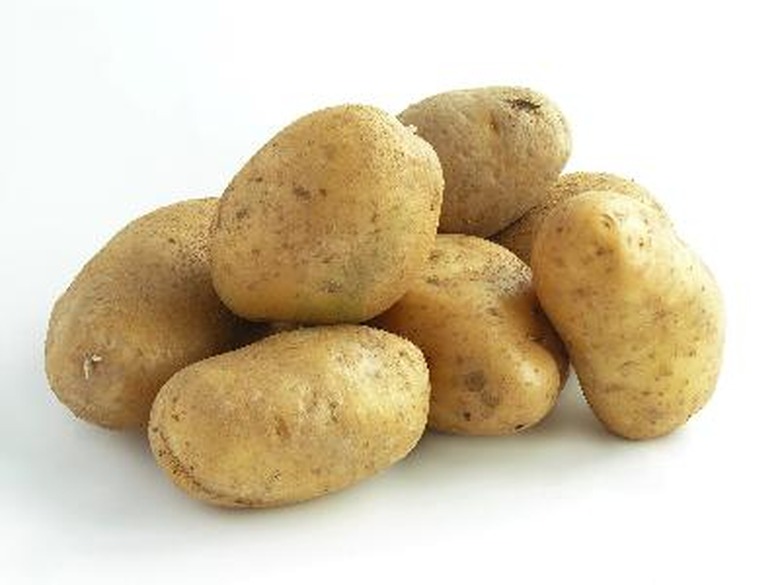Vegetables That Love Clay Soil
Most garden vegetables prefer well-drained loamy soil with a neutral pH. However, in many parts of North America, especially the Appalachian Mountains and other hilly regions, good drainage can be difficult to find. Clay soils produce stunted growth and encourage fungal diseases, such as root rot. Amending your soil with additives or choosing vegetables that grow well in this type of soil increase your chances of a healthy, productive garden.
Potatoes
According to the English Gardening website, potatoes are a traditional crop for breaking up clay soils. These plants grow in a wide range of soils, although they prefer gardens high in organic matter with a relatively acid pH. Adding compost or other organic material improves potato yields and ashes or peat decreases pH, since alkaline soils lead to potato scab disease. Potatoes reduce compaction in your clay-soil garden, making the environment friendlier for other vegetables. Avoid early varieties, as clay soils stay colder in spring than other soil types.
Peas
These plants grow well in just about any soil from clay to sand, as long as they have adequate drainage. They prefer slightly acidic to slightly alkaline soils with pH from pH 6 to pH 7.5. However, they will grow in soils with stronger acidity or alkalinity. Avoid overwatering when growing peas on clay, as too much water encourages wilt and root rot diseases. After harvest, cut the plants at soil level, leaving the roots in the ground to add nitrogen and organic material to the soil. This improves drainage and soil quality.
Cabbage
Cabbage and other members of the Brassica family grow well in soils ranging from loam to silty clay. They tolerate intermediate levels of salt, which sometimes build up in clay soils after extensive fertilizer use. They grow best in the cool season. As with potatoes, choose cabbages and cabbage relatives that grow during the late spring and summer, as clay soils often remain too cold for early planting.
Considerations
Even plants that do well in clay soil prefer good drainage and high fertility. Amending your clay-based soil makes it friendlier to clay-loving garden vegetables and improves yield. Adding organic materials, such as compost, manure and peat, gives your soil better nutrition and reduces the chance of water pooling. Include grass clippings, dead garden plants and organic yard waste in the fall to compost over the winter. Avoid adding sand, since the result actually compacts more easily and firmly than clay alone.
